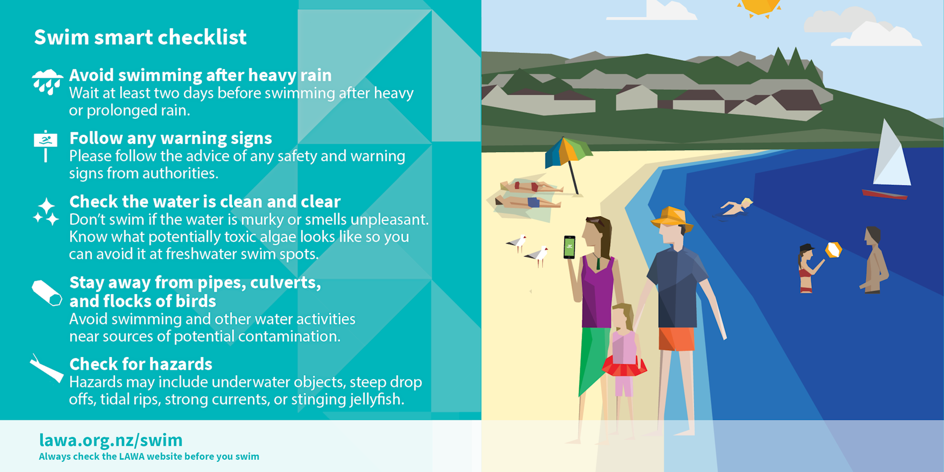Water Quality Scientist Anna Madarasz-Smith advises all would-be-swimmers to check ‘Can I swim here?’ on the LAWA website before deciding when and where to cool off this summer.
‘Can I swim here?’ lists water quality information and regularly updated advice for more than 800 swim spots – the highest number of sites with recreational water quality information ever presented in Aotearoa.
“Swimming in rivers, lakes, and at beaches is never without risk, however it is part of the Kiwi summer and can boost wellbeing. By checking LAWA for water quality results and warnings, you can make informed choices that help keep you and your whānau well these holidays.
“The popular swim spots listed on the ‘Can I swim here?’ tool are monitored by regional and unitary councils. These 16 councils cover all regions of New Zealand, and they will be keeping results and warnings updated on lawa.org.nz/swim all summer long.
“The LAWA ‘Can I swim here?’ tool presents the best available information on swimming water quality risk graded using a traffic light system and additional warnings when required.
“A green swim icon represents a suitable for swimming water quality result, amber means caution is advised, and a red icon means the water is not suitable for swimming because the risk of infection and/or exposure to potentially toxic algae is above acceptable levels,” says Ms Madarasz-Smith.
Depending on which region a swim spot is in, the latest traffic light result on ‘Can I swim here?’ will either be based on the most recent physical water quality sample, or the predicted risk based on local conditions and swim spot performance over time.
Tomorrow (22 December) is the summer solstice. This is the longest day of the year and official start of the astronomical summer. Ms Madarasz-Smith says that while temperatures are warming up, there has been a lot of wet weather in parts of the country – and this can impact water quality.
“Most monitored swim spots in New Zealand are suitable for swimming most of the time. However, water quality can change quickly, particularly after rain when contaminants that can make people sick may be washed into waterways.
“It’s important to avoid swimming after heavy or prolonged rain for at least 48 hours, even at sites that generally have good water quality.
“We also advise following the other steps in our Swim Smart Checklist. This means observing any warning signs at the swim spot, checking the water is clean and clear, looking for hazards in and around the water such as toxic algae and strong currents, and not swimming near any possible sources of contamination,” said Ms Madarasz-Smith.

